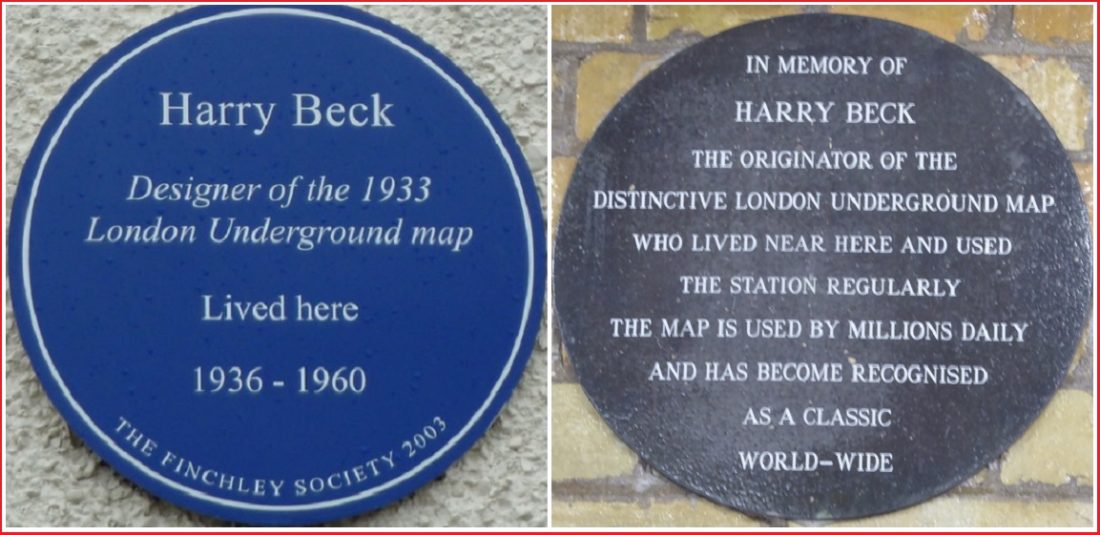Finchley’s Blue Plaque man who mapped London

How many times have you stared at the Tube map, working out your route? A blue plaque in Finchley acknowledges the draughtsman who made the task simple for you – Harry Beck.
Harry died 50 years ago this week and to mark the anniversary, a new play is being staged by the Natural Theatre Company: The Truth about Harry Beck, at the Cubic Theatre in the London Transport Museum. Highly appropriate then that he had already been chosen for this newsletter item about Finchley’s five blue plaques.
Harry Charles Beck was born on June 4, 1902, in Leyton, and began his career as an engineering draughtsman in the 1920s at the London Underground signals office. In his spare time he designed the Tube map based on comprehension rather than geographical accuracy.
The design was inspired by an electric circuit diagram. Initially it was considered too radical and was rejected by Frank Pick of the London Underground in 1931. But the old saying: “If at first you don’t succeed” certainly applied to an innovator who understood passengers’ priorities. A revised version was trialled in 1932 and was so successful that 700,000 copies were printed a year later.
For more than 30 years, Harry Beck updated and revised his original London Underground map. Sadly he was never paid anything more than a nominal sum or properly recognised for his seminal work until after he had died in 1974. His concept adorns all manner of merchandise – from mugs to T-shirts – and has been adopted by urban transport systems around the world.
In 2003 Harry Beck’s work was recognised when he became one of the five subjects honoured with a blue plaque by the Finchley Society. The plaque is sited at 60 Courthouse Gardens which had been his home from 1934 to 1960 and from which he would walk for his daily commute at Finchley Central. An English Heritage blue plaque marks the house in which he was born in Leyton.
Finchley Central’s southbound platform displays a copy of Harry Beck’s original design plus an information board bearing the text: “One man’s vision – A public transport system is of little benefit to its customers if they are unable to find their way around it.”
— Lynn Radnedge
